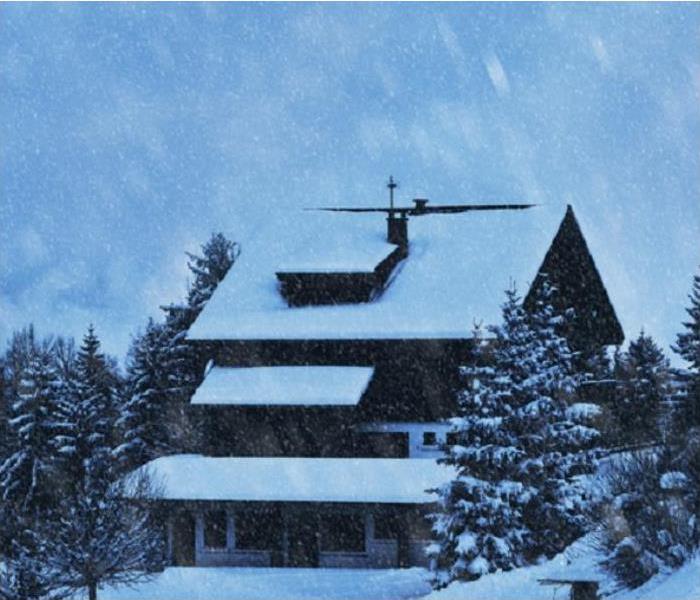Some Winter Weather Q & A
9/2/2020 (Permalink)
 While we hope you never experience a disaster in your home, we do know we are ready to help you restore it in the event of one
While we hope you never experience a disaster in your home, we do know we are ready to help you restore it in the event of one
There's snow business like snow business.
Here's a fun Q & A about Snow in our Area.
Can it ever be too cold to snow?
It rarely snows when the temperature drops below zero degrees Fahrenheit because the atmosphere is too stable. One of the ingredients for snow is enough lifting of saturated air that snow can develop aloft and fall to reach the surface.
What is thundersnow?
Although thunderstorms are less common in the winter, sometimes lightning can occur within snowstorms and is called thundersnow. Thundersnow can be found where there is relatively strong instability and abundant moisture above the surface, such as above a warm front.
How many inches of snow equals one inch of rain?
On average, thirteen inches of snow equals one inch of rain in the US, although this ratio can vary from two inches for sleet to nearly fifty inches for very dry, powdery snow under certain conditions.
What is white lightning?
White lightning is a colloquial term for thunderstorms occurring with snow.
What are the important winter weather notices?
Blizzard Warning: Issued when winds of 35 mph or greater are combined with blowing and drifting snow with visibility of ¼ mile or less. Seek indoor shelter immediately and stay indoors until the severe conditions end.
Winter Storm Warning: Issued when a combination of hazardous winter weather in the form of heavy snow, heavy freezing rain, or heavy sleet is imminent or occurring. Winter Storm Warnings are usually issued 12 to 24 hours before the event is expected to begin.
Winter Storm Watch: Issued 12-48 hours in advance of the onset of severe winter conditions. The watch may or may not be upgraded to a winter storm warning, depending on how the weather system moves or how it is developing.
Winter Storm Outlook: Issued prior to a Winter Storm Watch. The Outlook is given when forecasters believe winter storm conditions are possible and are usually issued 3 to 5 days in advance of a winter storm.
Winter Weather Advisories: Issued for accumulations of snow, freezing rain, freezing drizzle, and sleet which will cause significant inconveniences and, if caution is not exercised, could lead to life-threatening situations.
Wind Chill Warning: Issued when wind chill temperatures are expected to be hazardous to life within several minutes of exposure.
Wind Chill Advisory: Issued for a wind chill situation that could cause significant inconveniences, but do not meet warning criteria. Criteria for issuing Windchill Warnings and Advisories are set locally.
Dense Fog Advisory: Issued when fog will reduce visibility to ¼ mile or less over a widespread area.
Snow Flurries: Light snow falling for a short duration. No accumulation or light dusting is all that is expected.
Snow Showers: Snow falling at varying intensities for brief periods of time. Some accumulation is possible.
Blowing Snow: Wind-driven snow that reduces visibility and causes significant drifting. Blowing snow may be snow that is falling and/or loose snow on the ground picked up by the wind.






 24/7 Emergency Service
24/7 Emergency Service